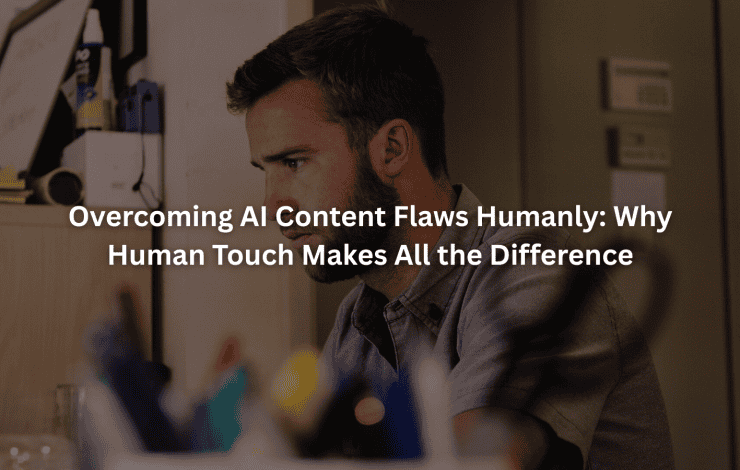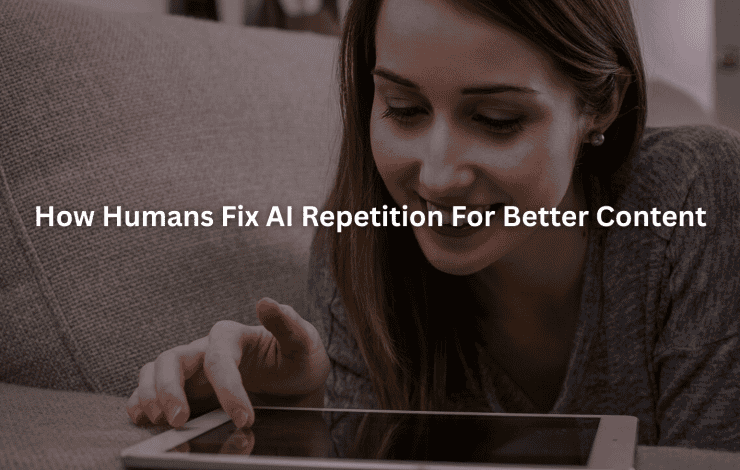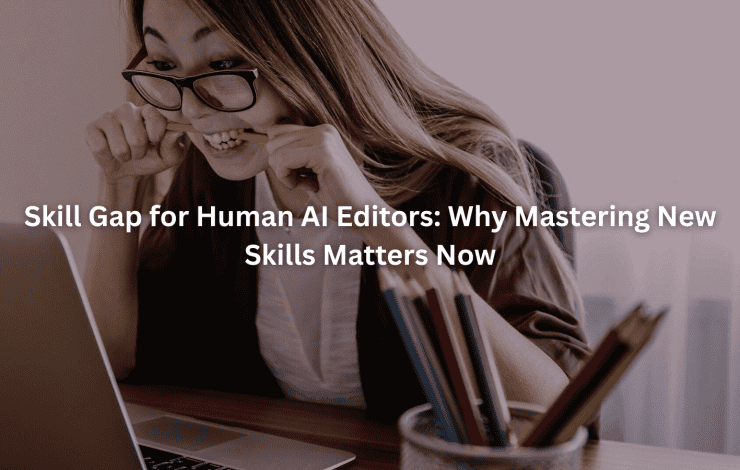Nobody said juggling AI speed and human smarts would be easy. Every day editors catch the weird stuff AI tries to slip in, fix the robot voice, and keep things moving. Gotta work fast but can’t let quality slip.
At Jet Digital Pro, we’re knee-deep in this balancing act. Between keeping up with new AI tools and making sure everything stays honest, editors have their hands full. But that’s the job: making sure machines and humans work together to create stuff that actually sounds like it came from real people.
Key Takeaway
- You can’t take your eyes off AI for a second, or it’ll start making stuff up
- Machines still don’t get the whole “human touch” thing, so that’s on us
- Editors better keep learning, cause this AI train isn’t slowing down
Challenges Human AI Editors Face: Accuracy and Content Quality Issues
Accuracy Challenges in Human AI Editing
Man, if there’s one thing that drives us nuts at Jet Digital Pro, it’s catching all the stuff AI just makes up. Like, it’ll write this super smooth paragraph about some CEO meeting that never happened, or throw in statistics that sound right but aren’t even close.
Should be simple to spot mistakes, right? Wrong. There we are at 2 AM, bleary-eyed, scanning through dusty corners of the internet just to verify if this one stupid detail actually happened or if the AI made it up, just one example of the real challenges human AI editors face every single day.
God the outdated stuff kills me. The AI’s like that friend who doesn’t realize 2019 was five years ago. It’ll confidently tell you all about trends that died before COVID was even a thing. Sure, it writes pretty sentences. Real pretty. But pretty doesn’t mean true.
This echoes how AI is used in HR. It streamlines and speeds up tasks like recruitment or onboarding, but human validation remains essential to ensure outputs are current, accurate, and trustworthy [ 1 ].
So we check everything. Then check it again. And probably one more time because why not. Takes forever but beats publishing nonsense. At least we get that first draft quick though. But that’s when the fun begins. And by fun I mean actual work. Lots of it.
Tone and Style Consistency Challenges
Robots can’t read a room. That’s the simple truth we deal with every day. The AI writes like… well, like AI. One minute it’s casual, next minute it sounds like a college textbook. Sometimes it gets stuck on repeat, using the same words over and over. At Jet Digital Pro, we spend hours making sure everything sounds like it came from actual humans who know what they’re talking about.
Culture’s another headache. The AI doesn’t get when it’s being tone-deaf or saying something that might tick people off. We’ve had to trash whole sections because they just didn’t feel right. And don’t get us started on readability. Sometimes the AI writes sentences that make your brain hurt. Real people don’t talk like that.
Sure, you can tell the AI to use different words. But that’s not the same as making something flow. It’s like teaching a robot to dance – technically possible but usually pretty awkward.
Ethical Challenges in Human AI Editing
Ethics isn’t something you can program. We’ve caught the AI saying some pretty questionable stuff without realizing it. Like when it casually drops stereotypes into business articles or makes claims that sound legit but aren’t quite true. Cleaning that up? That’s on us.
Nobody wants to be the company that published something harmful. The AI doesn’t care if what it writes could get someone in trouble or hurt someone’s feelings. The thing spits out words like a broken faucet. No filter. Zero awareness. Just endless streams of text that sound smart until you actually read them. Scary stuff when you think about it.
And this aligns with insights from CX experts. AI can’t offer empathy, creativity, or meaningful relationships; only talented human editors can infuse that sense of care, trust, and nuance that keeps content from going off the rails [ 2 ].
Listen. We found out real quick at Jet Digital Pro that you can’t leave AI unsupervised. Like ever. Yeah sure it churns out content faster than Karen from accounting can say “synergy.” But somebody’s gotta babysit this thing or we’ll end up with a mess that takes twice as long to clean up. Been there. Done that. Got the therapy bills to prove it. Legal stuff, reputation stuff – that’s too important to leave to machines.
Technical Challenges Human AI Editors Encounter
First thing we learned about AI? Know where it drops the ball. Not exactly rocket science, but here’s what we’re dealing with:
- AI gets confused with complicated instructions
- Sometimes mixes up facts from different topics
- Can’t explain why it wrote something a certain way
- Needs really specific prompts to get decent results
Getting AI to play nice with our regular editing process wasn’t exactly smooth sailing either. Just ask our teams who spent weeks figuring this stuff out:
- Had to rebuild our whole review system
- Created new ways to check AI’s work
- Set up feedback loops that actually make sense
- Still dealing with AI’s “trust me bro” approach to facts
Look, at the end of the day, we treat AI like the intern who’s eager but needs constant supervision. Keeps things simpler that way. Plus it helps us catch the weird stuff before it hits publish. Sometimes the old ways still work best.
Workflow and Collaboration Challenges in Human AI Editing
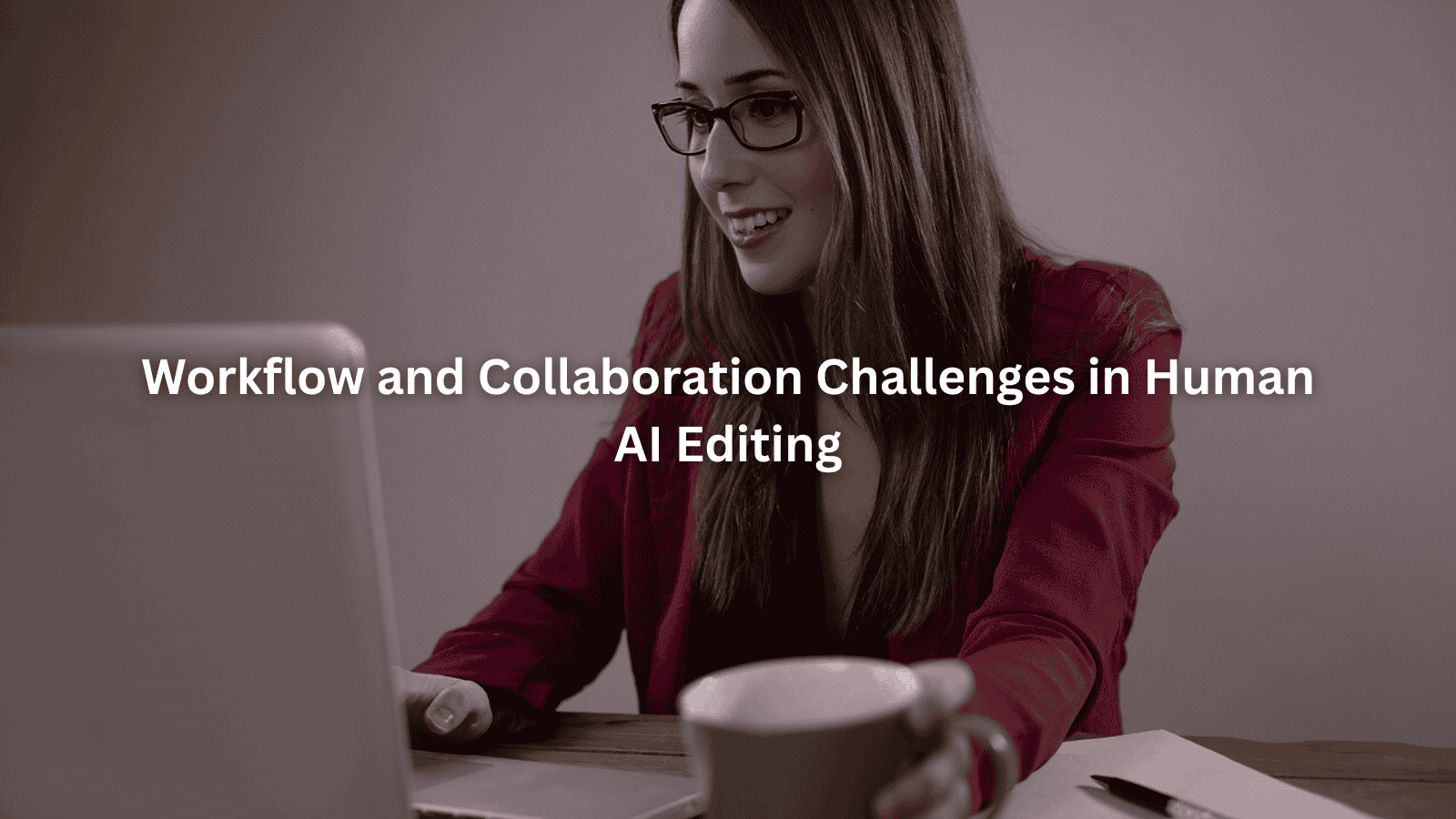
Time Management and Scalability Issues
AI can pump out drafts fast, but human review takes time. We constantly juggle the speed AI offers with the thoroughness needed for quality. At Jet Digital Pro, we manage large volumes by prioritizing edits based on content complexity and risk level.
Bottlenecks happen when editors face fatigue or unclear responsibilities. We’ve learned to allocate resources wisely and schedule breaks to avoid burnout. Balancing speed with accuracy means sometimes slowing down to catch subtle issues AI missed.
Handling high output volumes requires scalable workflows. We use specialized tools to automate routine checks, freeing editors to focus on nuanced tasks. Still, there’s no shortcut for human judgment on tricky edits.
Human-AI Collaboration and Role Definition
Clear roles prevent confusion and over-reliance on AI. We’ve seen teams where editors expect AI to do everything, resulting in unchecked errors. Defining responsibilities upfront helps establish what AI handles and when humans step in.
Multi-stage editing processes work best. For instance, AI drafts first, then editors review for accuracy and tone, followed by a final quality check. Iterative reviews make the content stronger and reduce mistakes slipping through.
Avoiding complacency is key. Editors must remain critical and resist trusting AI blindly. We foster a culture where human oversight is non-negotiable, even as AI tools become more sophisticated.
Adaptation Challenges with Rapid AI Evolution
AI tech changes fast. New features and versions require constant learning. Editors need to stay up to speed or risk falling behind. We invest in ongoing training and update guidelines regularly to reflect AI’s evolving capabilities.
Changing workflows to incorporate new AI tools takes effort. Sometimes editors resist switching tools or processes, creating friction. At Jet Digital Pro, we emphasize collaboration and open communication to ease transitions.
Keeping our skills sharp and workflows flexible is critical to staying effective. It’s a moving target, but necessary to maintain quality in a fast-changing environment.
Cognitive Load and Emotional Intelligence Demands
Editing AI content can be mentally exhausting. We sift through countless outputs, hunting for subtle errors or jarring tone. This vigilance leads to fatigue, especially when deadlines loom.
AI lacks emotional intelligence. It misses humor, empathy, or irony, elements editors must inject manually. We apply critical thinking to bring warmth and personality to content, something AI can’t replicate.
Building trust in our human-AI partnership requires transparency. Editors want to understand AI’s reasoning but often face opaque systems. We encourage discussion about AI’s strengths and limits to alleviate frustration and strengthen collaboration.
Content Quality Control and Ethical Responsibility in AI Editing
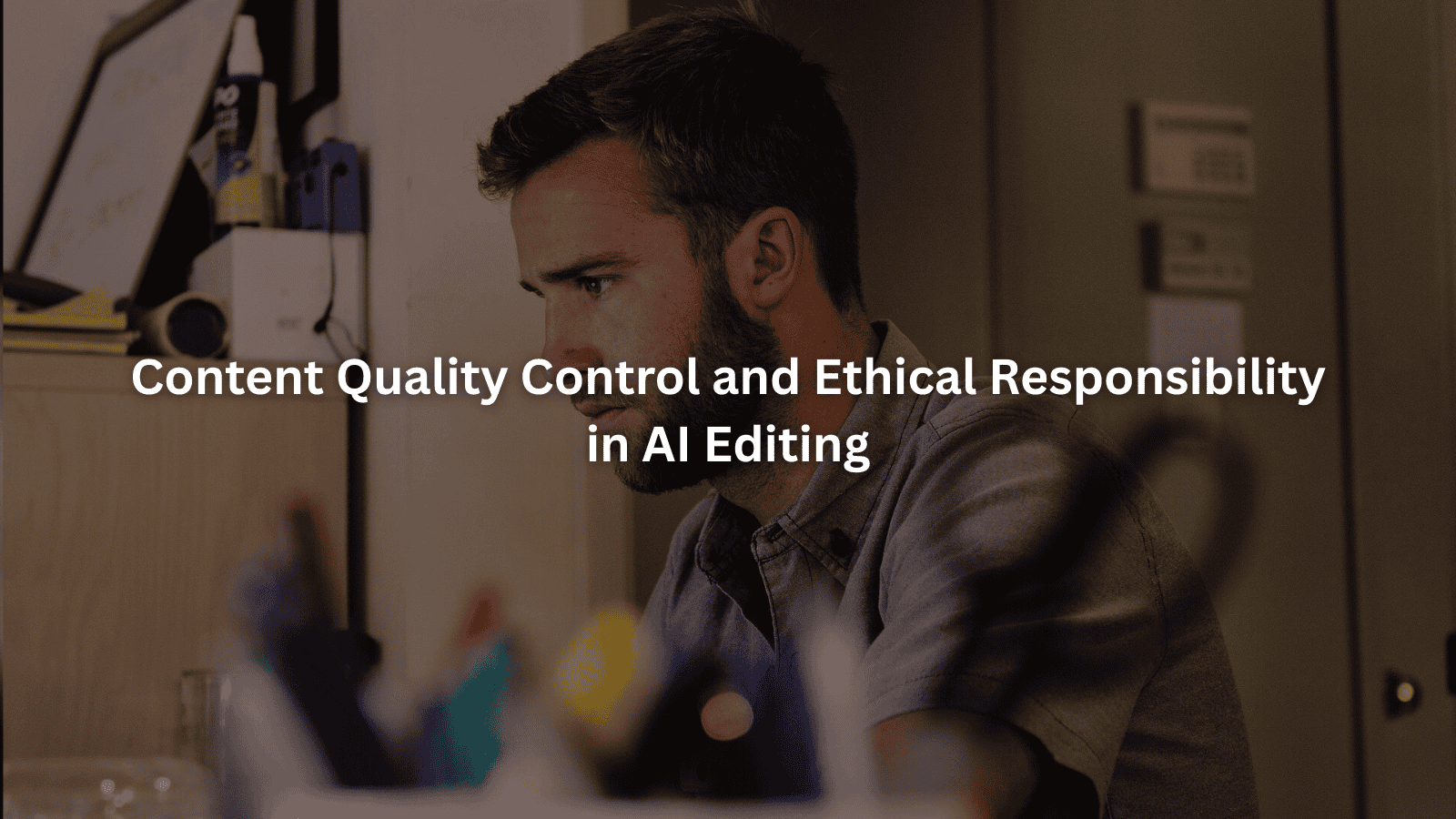
Ensuring Editorial Judgment and Content Authenticity
Human creativity remains essential. AI can suggest phrasing but not strategic rewriting. We reshape AI drafts to reflect brand identity and editorial voice authentically.
Spotting subtle AI errors takes experience. Sometimes mistakes hide in phrasing or context, requiring a keen eye. Editors validate content against ethical and brand standards before publication.
We treat AI as a starting point, not the final product. Our judgment ensures content is truthful, engaging, and aligned with client goals.
Addressing AI Content Engagement and Readability Issues
AI-generated text often feels flat. We add emotional connection and persuasive elements to boost audience resonance. This means rewriting sentences for flow, clarity, and tone.
AI tends to overuse certain phrases, leading to rigid or repetitive language. Our editing varies sentence structure and vocabulary to keep readers engaged.
Balancing technical accuracy with a conversational style is a constant challenge. We aim for content that’s both credible and approachable, which demands nuanced editing beyond AI’s reach.
Managing Ethical Risks and Legal Compliance
Look, nobody wants to be that company that let AI say something stupid. Or illegal. Or both. We’ve seen enough PR nightmares to know better. Here’s what keeps us out of trouble:
- Running everything through bias checks (the software kind and the human kind)
- Keeping a list of AI’s greatest hits (and misses)
- Making sure we don’t accidentally break any laws
- Double checking anything that sounds too good to be true
- Having lawyers on speed dial (just kidding… sort of)
Are You a Digital Agency?
White Label SEO Content Services for Agencies
Scalable, customizable, and results-driven content solutions for your clients.
The thing about AI is it doesn’t care about getting sued. It’ll happily write stuff that could land us in hot water faster than you can say “cease and desist.” That’s why we’ve got actual humans watching every step. Sure, it slows things down. But try explaining to the boss why we’re trending on Twitter for all the wrong reasons. Yeah, exactly. Plus we keep records of everything, because nothing says “we tried our best” like a solid paper trail.
Transparency and Explainability in AI Editing Processes
Editors want insight into how AI generates suggestions. Lack of explainability breeds mistrust or over-reliance. We advocate for tools that provide reasoning or highlight confidence levels.
Clear communication about AI’s limits helps editors make informed decisions. At Jet Digital Pro, we foster a balanced view of AI as an assistant, not a replacement.
Audit trails and traceability of edits build confidence in the process. Knowing who changed what and why enhances transparency and accountability.
Strategies to Overcome Challenges in Human AI Editing
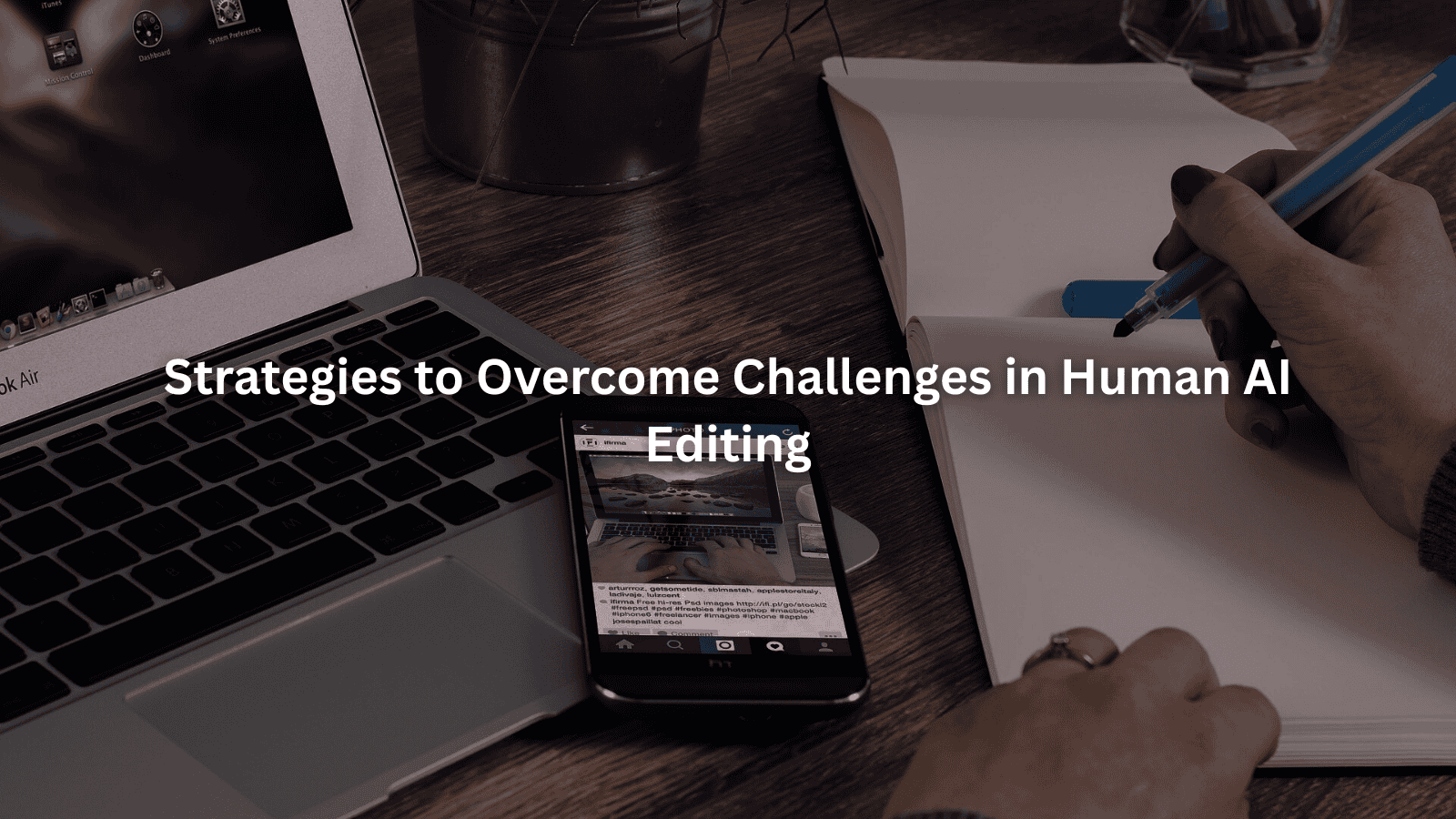
Workflow Optimization and Time Efficiency
We prioritize editing tasks by complexity and risk, focusing human effort where AI is weakest. Specialized tools automate grammar and style checks, letting editors zero in on content quality. We learned that the hard way. These days, we’re smarter about it:
- Put the tough stuff first, where AI usually drops the ball
- Let the boring grammar checks run on autopilot
- Keep actual humans making the big calls
- Break down monster projects into bite-sized pieces
Routine tasks get automated, but human review stays central for nuance and judgment, one of the ways we overcome AI content flaws while keeping our editing process fast and reliable.
Continuous Skill Development and Training
We regularly train editors on AI strengths and weaknesses. Ethical awareness and critical thinking are emphasized to maintain high standards.
Updating editorial guidelines to incorporate AI literacy helps editors work effectively with machines, and regular training keeps us closing the skill gap for human AI editors in a field that’s changing faster than ever.
Enhancing Human-AI Communication and Trust
Increasing AI explainability and output transparency builds editor confidence. Collaborative interfaces allow editors to provide feedback and influence AI behavior.
Addressing editor concerns about AI reliability openly fosters trust. We promote a balanced perspective, seeing AI as a powerful assistant rather than a threat.
Ethical Frameworks and Quality Assurance Protocols
Need a Strategic SEO Content Partner?
Let’s craft SEO content that ranks, converts, and grows your brand.
Talk to UsClear ethical standards guide AI content use. Regular audits and bias mitigation techniques maintain integrity.
Accountability structures define responsibilities clearly, ensuring editors own final content quality. This framework supports consistent ethical compliance.
FAQ
How do human AI editors deal with AI’s tendency to repeat phrases or ideas too often?
AI sometimes gets stuck using the same words or sentence structures, making content feel dull or robotic. Human editors have to spot these patterns and rewrite sections to keep the writing fresh. This takes careful attention because simply swapping out words doesn’t fix the problem, editors need to vary sentence flow and tone to make the text engaging and natural.
Why is it difficult for human editors to trust AI’s fact-checking abilities fully?
AI can produce information that sounds accurate but may include false details or outdated facts. Human editors can’t rely on AI alone to verify content because it lacks real-world judgment. Editors have to cross-reference sources and use their own knowledge to confirm every claim, which adds time and complexity to the editing process.
In what ways does AI struggle with cultural sensitivity, and how do editors correct this?
AI doesn’t always understand cultural context or social nuances, which can lead to content that unintentionally offends or misrepresents groups. Human editors must carefully review AI-generated text to spot these issues and adjust language to respect diverse audiences. This requires editors to apply awareness and empathy that AI cannot replicate on its own.
How do human AI editors manage the mental fatigue caused by continuous oversight of AI content?
Editing AI content demands constant focus to catch subtle errors and tone inconsistencies, which can quickly wear editors out. Managing this mental load means balancing work hours, taking breaks, and using tools that reduce repetitive tasks. Without these strategies, editors risk burnout, which may lower the quality of their work over time.
What challenges arise when editors try to explain AI’s decision-making to clients or stakeholders?
AI often operates like a “black box,” making it hard to explain why it suggested certain wording or facts. Human editors face the challenge of translating AI behavior into understandable terms for clients. This requires breaking down technical details simply and honestly, so stakeholders can trust the editing process without feeling confused or skeptical.
Conclusion
At Jet Digital Pro, we know AI editing moves fast, but accuracy, ethics, workflow, and emotional nuance still demand human skill. Our 11-step editing process blends AI efficiency with expert judgment to deliver content that’s reliable, Google-resilient, and client-ready. For agencies, that means scalable, hands-off growth without sacrificing quality.
Partner with us today, discover how we can optimize your content workflow: Contact Jet Digital Pro
References
- https://www.imd.org/blog/digital-transformation/ai-in-hr
- https://customerthink.com/sorry-ai-cant-fix-your-cx-but-talented-humans-can
Related Articles
- https://jetdigitalpro.com/challenges-for-human-editors-of-ai-content/
- https://jetdigitalpro.com/overcoming-ai-content-flaws-humanly
- https://jetdigitalpro.com/skill-gap-for-human-ai-editors
P.S – Whenever you’re ready,
we’re here to help elevate your SEO content.
Partner with us for strategic, scalable content that drives real organic growth.
Contact Us Now


